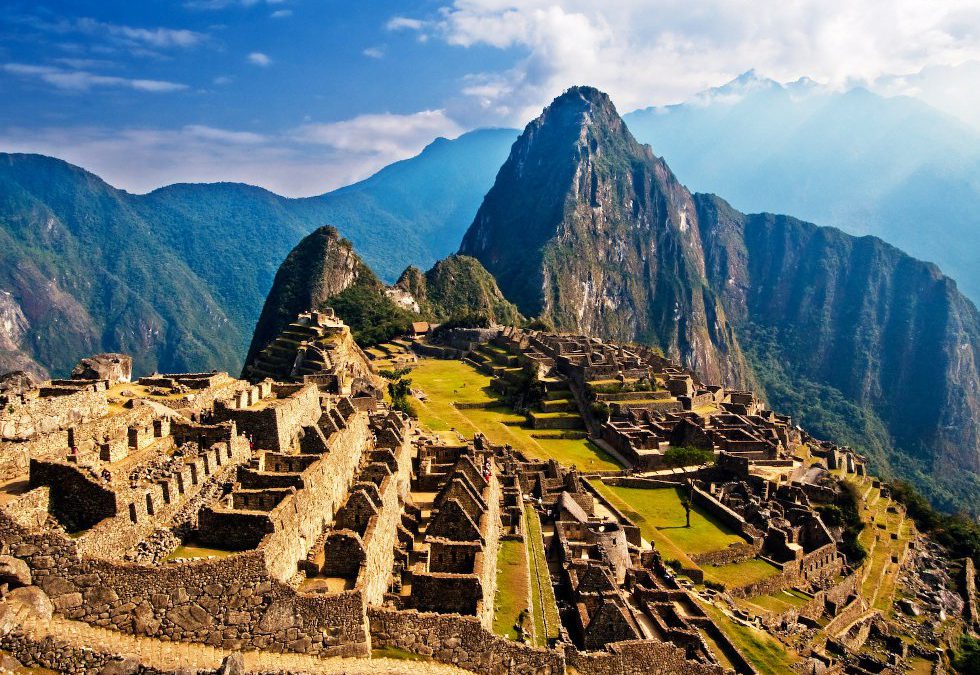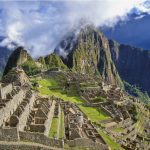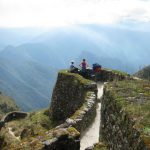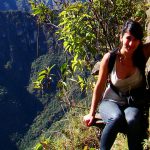The mysterious faces and symbols found at the ancient Inca citadel of Machu Picchu in Peru are extremely intriguing. Not only do they shed a unique light on the Inca civilization and culture but they are also not very obvious if you do not know what you are looking for.
Everyday thousands of travelers visit the world wonder of Machu Picchu and leave without even noticing these hidden faces and symbols.
The Inca civilization placed a strong emphasis on the concept of dualities as these reflected the harmony of the universe and these can be seen below in the mysterious faces and symbols of Machu Picchu.

The famous face of Machu Picchu / Source
♦ The Face of Machu Picchu & the Sleeping Woman
Unlike many of the symbols found at Machu Picchu, the resemblance of a male face can be seen in the mountains of Machu Picchu. The completely natural formation seems to show the nose, mouth and forehead looking to the skies.
If the duality shown by the Inca is to be followed, you will not be surprised to hear that there is also a sleeping woman.
A rock, roughly carved out to look like the side profile of a sleeping woman can be found at Machu Picchu. Samples taken from the surface of the rock have shown traces of gold etched on it with some archaeologists believing that this stone may have been completely covered in gold. If it was totally covered with gold, the sacred and precious metal of the Inca, it would glitter in the sun light perhaps providing an aerial signal to the deities above.

The side profile of Machu Picchu’s sleeping woman / Source
♦ Temple of the Condor
Andean condors are massive birds and their enormous 10-foot wingspan is one of their most discerning features. When you get to the Temple of the Condor at Machu Picchu, you may begin to wonder why the Andean Condor sculpted on the floor features just its head and body.
Taking a few steps back and the whole picture is revealed with its gigantic wings represented by two giant rocks, carved into the shape of wings.
The attention to detail is spectacular with the rock on the left not touching the ground, symbolizing the bird flying through the air.

The impressive Condor wings at the Temple of the Condor / Source
♦ The Llama in the Wall
In the ruins of Machu Picchu you will be able to observe thousands of rocks of all various shapes and sizes. While it may seem that they have no meaning other than their use for construction, there is no coincidence at Machu Picchu with each rock being carefully chosen and placed.
This can be seen on one of the walls of Machu Picchu, where upon closer inspection you can see the rocks arranged in the shape of a llama.
Featuring a head, neck, body and tail, traces of colors were also found on the rock’s surface suggesting it might have been painted centuries ago. Many other small statues of llamas covered in animal fat have been unearthed by historians and archaeologists at Machu Picchu.

The shape of a llama found in a wall of Machu Picchu / Source
♦ Rocks & Houses shaped like the Mountains
Machu Picchu and the orientation of its most important structures were strongly influenced by the location of nearby holy mountains, or apus. Throughout the Inca ruins of Machu Picchu, there are a number of ‘echo stones’ which are aligned with the shape and formation of the apus surrounding Machu Picchu.
The 25-footlong Sacred Rock of Machu Picchu is hard to miss and it even sits on a pedestal to ensure you notice it.
Also known as the Altar of the Replica of the Apus, the Sacred Rock resembles the silhouette of a group of important mountain peaks, specifically Yanantin Mountain.

The Sacred Rock mirroring the shape of the Yanantin Mountain in the background / Source
Similar to mountain shaped rocks, the former-houses found in Machu Picchu have their tops shaped like the mountains behind them. From the front of these buildings you will also be able to see that the slopes of their sides perfectly coincide with the gradient of the outlined mountain. By using the shapes of the distant mountain peaks, the carved rocks and houses were believed to embody the same powerful beings, marrying Machu Picchu to the Apus.

Machu Picchu buildings reflecting the surrounding mountains / Source
Thanks for visiting our Central & South America Travel Blog! Feel free to contact one of our Travel Specialists via email, phone or chat to plan your perfect Peru itinerary.





